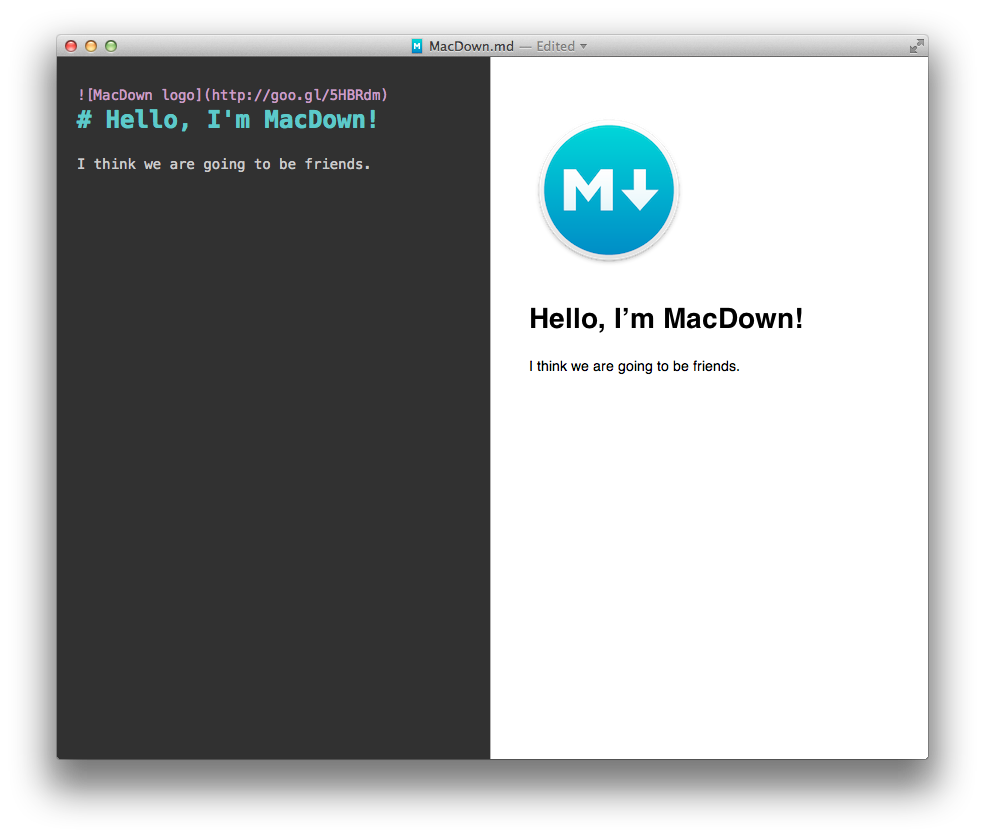


Find markdown-pdf settings in the Default Settings. Select File > Preferences > UserSettings or Workspace Settings. –指定のPOSIX pathのファイルを強制削除(あってもなくてもいい) on deleteItemAt ( aPOSIXpath ) set theNSFileManager to current application’s NSFileManager’s defaultManager () set theResult to theNSFileManager’s removeItemAtPath :( aPOSIXpath ) |error| :( missing value ) return ( theResult as integer = 1 ) as boolean end deleteItemAtġ0.11savvy (1101) 10.12savvy (1242) 10.13savvy (1390) 10.14savvy (586) 10.15savvy (434) 11.0savvy (276) 12.0savvy (178) 13. Visual Studio Code User and Workspace Settings. Paste the following code into the editor that opens in a new tab: 'editorInfo.foreground': 'ff0000'. Scroll down to Color Customization: Click Edit in settings.json.
#MACDOWN EXPORT PDF#
Markdown Preview Enhanced is able to work with the Chrome browser to generate PDF documents, through the Puppeteer driver. 各ページのテキストが見出しの内容で終了していれば、結果出力用の変数midashiOchiListに set origData to origData as text set AppleScript’s text item delimiters to curDelim –set b to origData as text return origData end replaceText Click on the gear icon in the lower-left corner of the interface. With the pane open, you can now right click on it and export to various formats, such as HTML or PDF.

It works, but there are a couple of issues: - the note from annotations is not kept updated if I make a new one, they are both updated, so I have to delete the previous one.
#MACDOWN EXPORT FULL#
do a MDnotes -> Create full export note to get the markdown file out. I spent some time this morning digging through it again and think I figured out a workaround. Assuming you haven’t messed with the plugin settings, you should get a PDF in the same folder as your Markdown file. From there, creating a PDF is as easy as right clicking the markdown file in the editor and selecting Markdown PDF: Export (pdf).


 0 kommentar(er)
0 kommentar(er)
